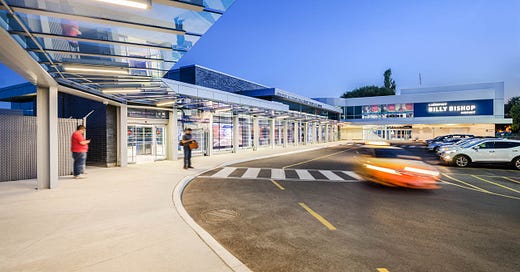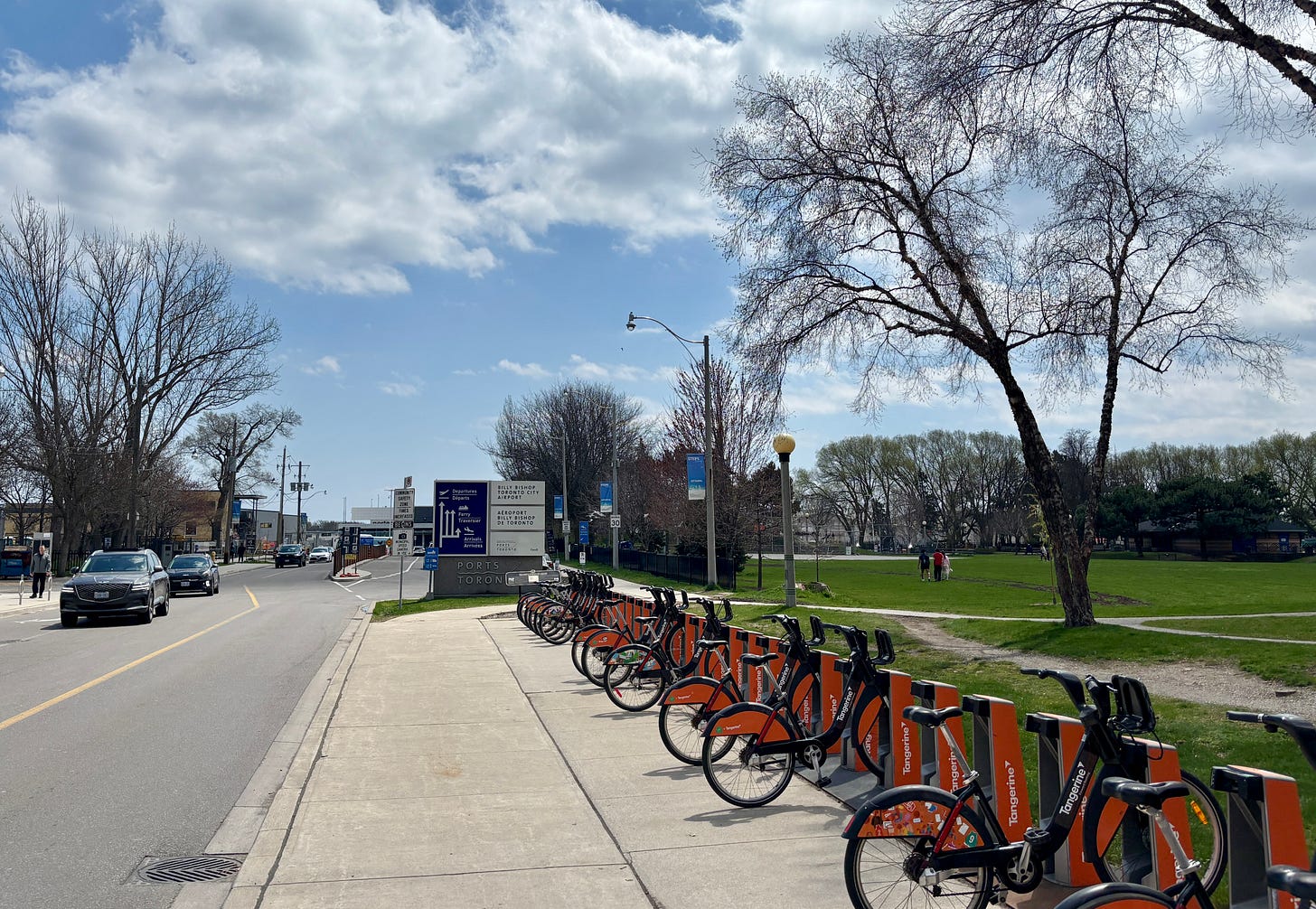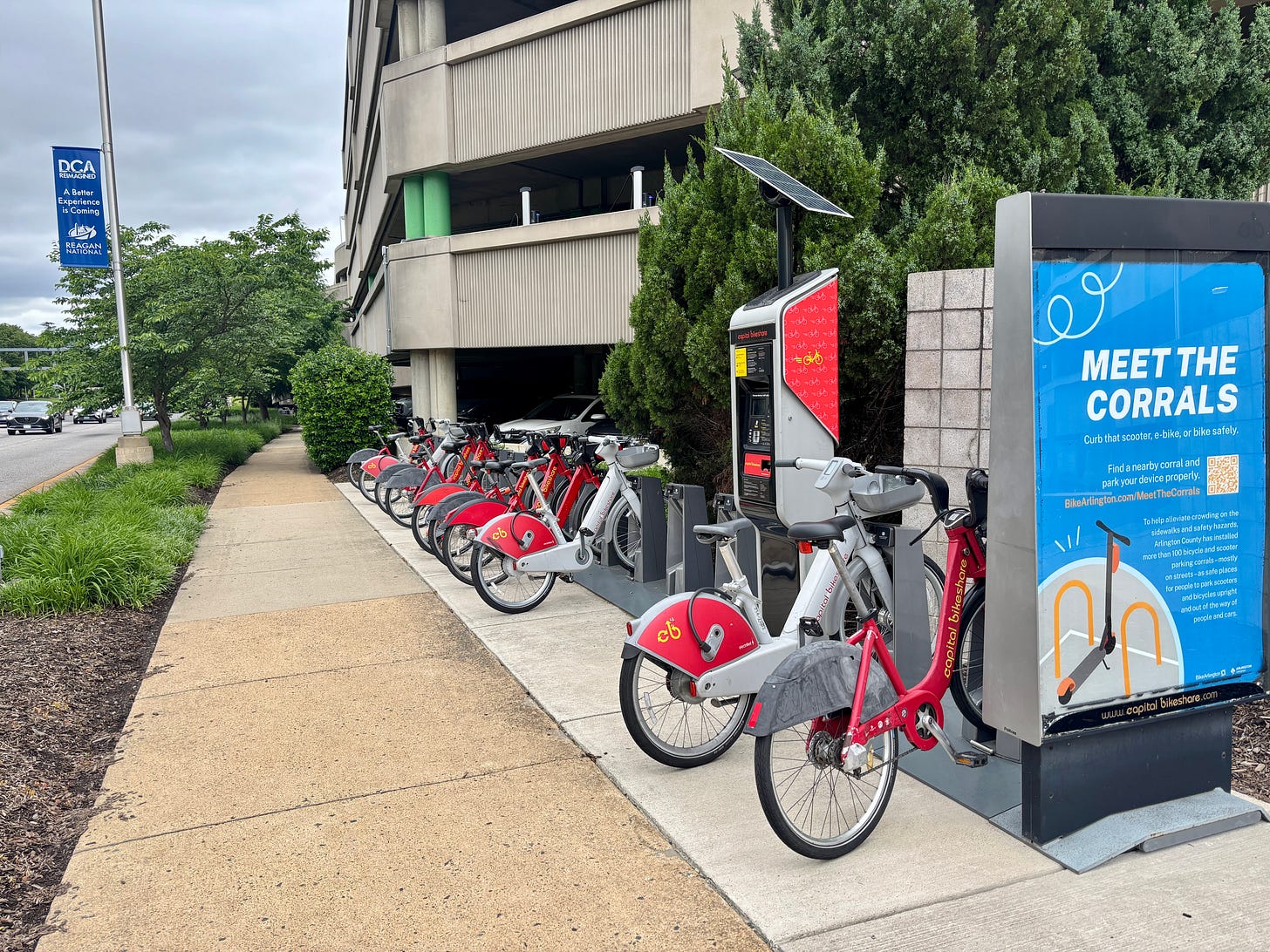Arrivals was a breeze at Billy Bishop Toronto City Airport on a recent Friday. With no bag to collect, I was through baggage claim and into the airport’s island lobby in no time. A quick walk through the tunnel and I was on the Canadian mainland with a decision to make.
My friend and travel companion, Jason, was taking the free shuttle bus to Toronto’s Union Station. I, on the other hand, was keen to put Billy Bishop’s reputation as a neighborhood airport to the test.
Armed with the Bike Share Toronto app and Apple Maps cycling directions, I set off down the sidewalk to find the bikeshare dock and meet Jason near Union Station.
Airports and all their associated needs — terminals, hangars, taxiways, runways, etc. — are the antithesis of urbanity. They need space to spread out whereas cities are at their best when dense and compact. Once airport planners learned this around the middle of the last century, new airfields were often located far from the cities they served to give them room to breathe.
This hierarchy of needs is why few airports are easy to access without some form of motorized transport, be it a car, bus, or train. The distances are just too great for most people to seriously consider walking, biking, or scooting to a flight, and that is reflected in most airport design.
Take a moment the next time you are at a major airport. Are there bike racks? Can you scoot up to the terminal? Are there even sidewalks leading to the building? The answer is often no.
Put most airports’ main address1 into Walk Score, the website that estimates a location’s walkability based on the “amenities” reachable within walking distance, and few rank highly. (I am using “walkability,” “pedestrian-friendly,” and “bikeability” interchangeably as most walkable airports are also bikeable, and vice versa.)
Billy Bishop ranks among the best in North America with a Walk Score of 85 out of 100, or “very walkable.” For those unfamiliar, Billy Bishop airport is located on an island in Lake Ontario about a mile-and-a-half from downtown Toronto. The island is separated from the mainland by a 390-foot shipping channel that can be traversed by either ferry or an 853-foot long pedestrian tunnel designed by ZAS Architects that opened 2015. It is known as a “neighborhood airport” because its mainland gateway is steps from urban Toronto with its dense housing and vibrant street life.
For comparison, Dallas-Fort Worth International Airport, located about 20 miles from the respective downtowns of Dallas and Fort Worth and designed with drivers in mind, gets a Walk Score of 23, or “car-dependent.”
“There’s a reason nobody bikes to the airport and that’s because it sucks,” Sam Westby, a long-distance cyclist and influencer who lives in Boston and spoke to me last year about cycling to Logan airport (Walk Score: 29).
But an increasing number of people, both travelers and workers, are interested in accessing airports by foot, bike or some other way that does not involve a car. Airports are taking note.
Keep reading with a 7-day free trial
Subscribe to Airport Architecture to keep reading this post and get 7 days of free access to the full post archives.





